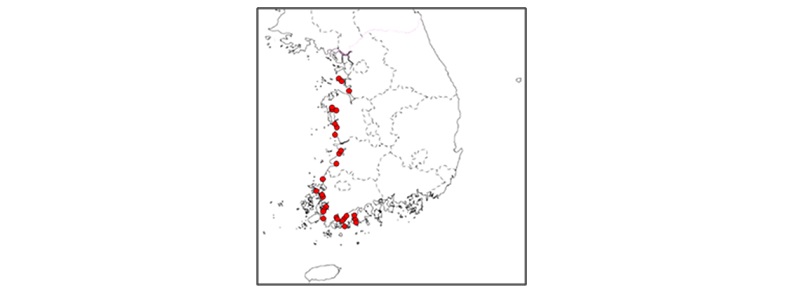Abstract
These studies were carried out to investigate the occurrence distribution of the brown silvertopgrass and to develop an effective control technique. It was observed in 36 areas including Incheon, Pyeongtaek, Seosan, Boryeong, Buan, Muan, Yeongam, and Goheung in 50 reclaimed paddy fields in the south and west coast of Korea. The initial soil treatment of pretilachlor, fentrazamide, oxadiagyl, bromobutide+thiobencarb, fentrazamide+oxadiagyl and oxadizon+pretilachlor was effective in controlling soil, but the treatment of benzobicyclon and pyrazolate tended to be low. Treatment of bromobutide+imazosulfuron+metamifop, bromobutide+imazosulfuron+pyraclonil, and benzobicyclon+fentrazamide+imazosulfuron was effective at 10-12 days after transplanting. However, treatment of metazosulfuron, metazosulfuron+oxaziclomefone, benzobicyclon+imazosulfuron+penenoxulam and penenoxulam the control effect tended to be low. The effect of treatment with cyhalofop-butyl tended to be higher in the late stage of growth. As a result, it is a tendency to occur throughout the south and west coast of Korea, in addition, the use of acetanilide herbicides is easy to control, and acetolactate synthase (ALS) and 4-hydroxyphenyl pyruvate dioxygenase (HPPD) inhibiting herbicides tend to be ineffective and attention should be paid to herbicide selection.
Figures & Tables

Fig. 1. Development distribution of on rice paddy field of Korea.


